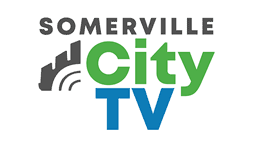Bringing people together across vastly different backgrounds is a difficult, but necessary endeavor for the health of any community. Meredith Levy, director of community organizing at the Somerville Community Corporation (SCC), armed with a few translators and a great deal of faith in personal empowerment, is fully behind the process of neighborhood building in East Somerville.
As Director of Community Organizing and facilitator of the East Somerville Neighbors for Change (ESNC), Levy said she believes firmly in the power of discussion and common ground. Serving the values of SCC, the city’s only community development corporation, the project furthers social and economic improvement in the city’s neighborhoods, she said.
The ESNC was formed in the spring of 2004 after a series of East Somerville Conversations in fall 2003, Levy said. These conversations were initiated by the SCC in response to increasing neighborhood viewpoints and were in collaboration with the existing Somerville Conversations Project.
Levy, an Ohio native and Somerville resident, began the group along with SCC community organizers Angel (Tito) Meza and Jesse Kanson-Benanav. ESNC is made up of residents and businesspeople of East Somerville, including members of various ages, backgrounds and languages.
The initiative began with a series of conversations in which eleven small groups met together to discuss their relationship to the neighborhood and to hear diverse perspectives on its history and future.
“We tried not to dwell on the negative, but talk about what works” said Levy, “then do a little bit of problem solving and establish communication between groups.”
Communication is a continual issue in a community home to such a diversity of ethnic and immigrant groups. Levy said that prior to ESNC work, “between groups and between people there is a lack of communication. When it comes to activities for kids, people don’t even know what exists.”
The organizing project hoped to cross boundaries that have made empowerment of East Somerville difficult in this past. “Diversity is important to us, so we will continue to struggle with it because we don’t want to be just one niche group,” she said. “The whole thing about East Somerville is its diversity.”
Language is a difficult factor, but ESNC attempts to bridge it through translated materials and the help of two South American students from the Tufts University College of Citizenship and Public Service Scholars. “The idea is to figure out universal themes and identify the way that they share this place.” Levy said.
Levy stressed a goal of the effort to bring out neighborhood leaders with time to devote to the project, a difficult task in overworked and underpaid families. “Sometimes people just don’t think they’ll get noticed in places like this,” she said. ESNC strives to take notice of those people and encourage them to speak out in the community.
Those participating in the ESNC are self-selected, having participated in the Conversations or heard about ESNC from neighborhood sources. According to Levy, participants arrived ready to work with the facilitators. “They’re able to do it, they find time to do it, and they’re energized. Those are all the things that we need,” she said.
Yvette Verdieu, an East Somerville resident for 10 years, an active member of ESNC and an SCC board member, exemplifies this energy.
Having arrived at SCC through the American Association for Women and human rights work, she has a broad perspective on the smaller changes that have taken place.
“When I first moved in to Somerville it was pretty bad in terms of cleanliness and all those things and people used to be isolated,” she said. “Now they are coming out to these meetings and you can see this glow in their faces.”
The culmination of the East Somerville Conversations was a meeting held in December 2003 at the Capuano Early Learning Center. ESNC group members, in a broadly represented forum of compromise, determined that youth issues should be addressed before the structural issues of the neighborhood like traffic, lighting and clean streets.
The group acknowledged the large number of unsupervised children spending their non-school time roaming the streets. “Parents can’t afford after-school programs,” said Levy. “Only one of the three local gym spaces is being used for after school programs, and in that one there’s no space for free, after-school drop-in programs.”
Members decided to launch a campaign to address youth issues in spring 2004. “Our campaign was to get the Recreation Commission to run thirty more hours of after school programming, which means the city needs to give them more money,” Levy said.
After a survey of over 200 East Somerville residents revealed overwhelming support, a program to more fully utilize the two gyms for after school recreation programs was suggested by the East Somerville committee to the city, and has been in the works since.
Maura McCarthy, ESNC spokeswoman, highlighted the importance of politicizing East Somerville’s needs. “We put together a proposal of the recreational needs of the community with Acting Recreation Director Karen Harrington, based on the existing programs and cost,” said McCarthy. “Karen presented it to her office, but the proposal was in our words.”
Harrington presented the proposal to Mayor Joseph A. Curtatone, the Board of Aldermen and the school committee in an October meeting of almost 100 people, McCarthy said. Still, this effort proved insufficient to communicate East Somerville’s needs.
“Eventually we called the mayor’s office and realized we needed to make a more formal proposal…We realized we had to go through offices, not people.” McCarthy said. “Now we have everyone calling their alderman, calling the school committee to get it heard.”
Despite the strength of combined voices gained by the group discussion, Levy said she regretted the lack of concrete funding. “It might be time for the next step to really keep the group visible.”
What is the next step for East Somerville? Levy said the cyclical process of community organizing is ongoing and she hopes to evaluate the successes and failures of the group.
“Then we think about how to grow and reach deeper into the immigrant community,” she said.
With future changes coming to East Somerville, the ESNC seeks to uphold the needs of its current residents. “What happens to the neighborhood should resonate with the group,” she said.
McCarthy suggested that the group has learned from this campaign how to better accomplish change. “We could put together a more seamless proposal now that we know how the system works,” she said.
Asked what she would like to see tackled next in East Somerville, McCarthy said that safety and lighting concerns top the list.
Verdieu is also highly motivated for continuing change and sees city officials as strong points of support. “The Alderman and the Mayor have been so helpful,” she said, “They are really understanding of East Somerville and ready to do something.”
Other city issues play a large part in the future of East Somerville. On the subject of a Green line extension to East Somerville, Levy said she advocated the importance of maintaining and building affordable housing alongside this development. “Gentrification could happen the way that it happened in Davis Square, so we want to make sure there are a lot of people there who are invested in getting more of what they want without being pushed out.”
The SCC’s main priority in other neighborhoods has been maintaining affordable housing as Section 8 thirty-year term limits begin to expire.
The Corporation is prepared to take similar measures in East Somerville should further need arise. “We need to see more affordable housing,” said Verdieu, “I wonder maybe if we can make us residents of Somerville so that they don’t have to move out as the market continues to get sky high.”
In order to counteract the conflict between healthy community development and displacement by gentrification, the SCC works to insure the people it benefits are the people it targets said Levy: a targeted scale of development which encourages neighborhood environments.
Levy said that financial incentives and community incentives are necessary to keep immigrant businesses in East Somerville and must be included in local development plans.
In terms of funding and development, Levy feels that East Somerville has historically been overlooked. The ESNC hopes to remedy this.
“Many neighborhood residents feel they have less access to things than other parts of the city,” Levy said. Levy sees this as a result of convenience or simply low visibility. While noting that the project’s goals may seem abstract, Levy was firm in her resolve to do what the group feels is necessary.
In order for community based activism to take hold and motivate change Levy said, “People must come together to stand up for themselves and say no, don’t do that, or yes, do this.”
The ESNC is always accepting new members to actively campaign for the needs of East Somerville residents and businesses.
“People with concerns about the neighborhood should step up and help us change things,” McCarthy said. “People in this group have really stepped up and taken on important roles.”
ESNC’s work has established empowered roles for its residents and continues to grow. Verdieu confirmed this forward-looking sentiment.
“Now that I am comfortable with the city and my work and can see these improvements, I am proud to live in East Somerville,” said Verdieu.
















Reader Comments